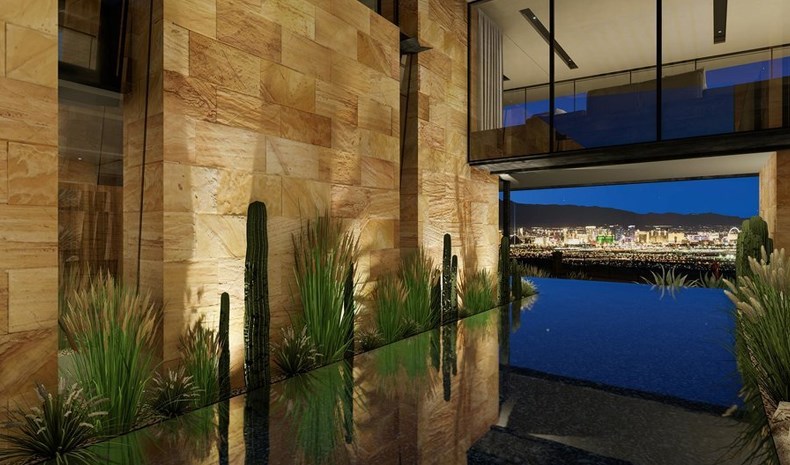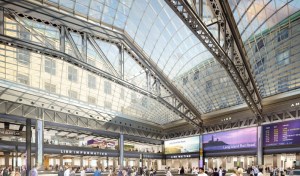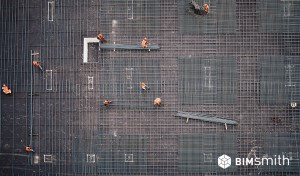During the government-imposed quarantines of 2020, life changed for just about everyone.
Did you at any point find yourself exploring area nature trails, taking extra walks, or conducting zoom meetings in your backyard? If so, a likely part of the reason was that you needed a view that was somehow different than the walls of your home office. But there's also likely a bigger, more subconcious reason: biophilia.
Biophilia addresses our innate need to commune with nature - whether we realize it or not. Perhaps you were among the many that took up gardening or added to your collection of indoor plants during quarantine. Some say the “crazy plant lady” has replaced the “crazy cat lady." In fact, #crazyplantlady has 1.9 million posts and #covidgardening has over 18,000 posts on Instagram already. If those are your new hobbies, you are not alone.
However, it's important to note that the fallout from COVID-19 did not start the trend towards biophilia – it only accelerated it.
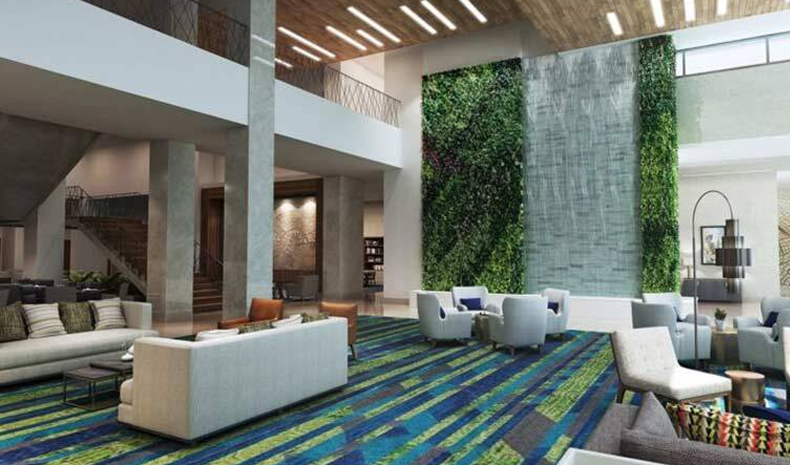
With such an abrupt and complete disruption to our lives, the craving for nature and the outdoors naturally intensified, along with the related anxiety and uncertainty about the future. It was not surprising to see a spike in sales of bikes, kayaks, and other outdoor equipment. Some of those items were near impossible to obtain due to demand. We not only had time to be outside, but we also needed to be outside.
Biophilic design has been trending strongly for several years, but its importance was heightened for many of us during the height of the pandemic. The restorative properties of nature should not be underestimated and the awareness of those benefits is transforming design for both commercial and residential projects.
Defining Biophilic Design
The term "biophilia" was coined by humanistic philosopher Erich Fromm in 1964. Conservationist Edward O. Wilson, the eminent biologist, researcher, theorist, naturalist, and author, popularized it in the mid-1980s. For Wilson, it described what he saw as humanity's "innate tendency to focus on life and lifelike processes" and to be drawn toward nature and feel an affinity for it – a love, a craving. The term itself means “love of life” in Greek and is based on the belief that humans need a connection to nature to thrive.
Biophilic design is defined by professor and author Dr. Stephen R. Kellertas as “an innovative approach that emphasizes the necessity of maintaining, enhancing and restoring the beneficial experience of nature in the built environment.” Utilizing multi-sensory design to enhance our connection to nature is changing the way we live, work, learn and heal.
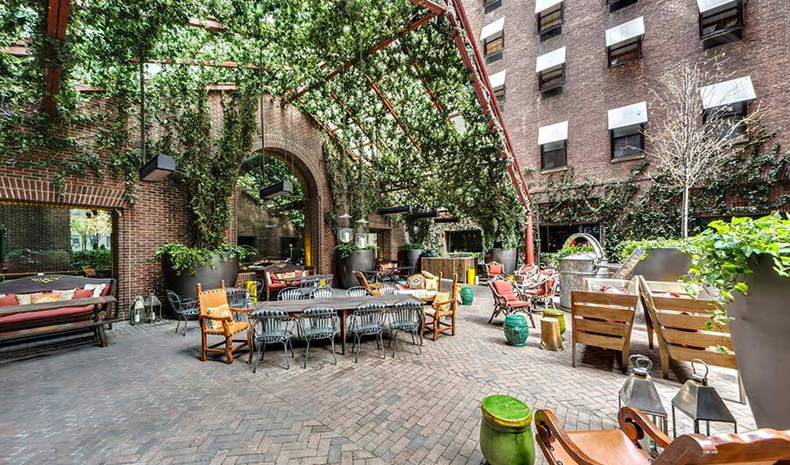
Pandemic aside, our need to connect with nature will continue as technology, devices, and hectic schedules consume our time. According to the Environmental Protection Agency (EPA), the average American spends 93% of their life indoors, with less than half a day per week outside. A study in the Journal of Environmental Science and Technology states: “In a meta-analysis of ten studies, they found that getting outside—and moving—for as little as five minutes at a time improved both mood and self-esteem.” If five minutes outside a day can improve our mood and self-esteem, imagine the potential impact of biophilic design on the spaces in which we work and live.
The Benefits of Biophilic Design
The benefits of biophilic design have been extensively researched. In educational environments, providing spaces that are open and connected to the outdoors increases mental stimuli, energy, and physical comfort levels and this, in turn, increases cognitive ability, attention, and memory levels (O'Brien & Murray, 2007). In healthcare, patients are less stressed when they have a view of nature, whether actual or representative. When less stressed, we heal faster, experience less pain, and even require less pain medication, resulting in shorter postoperative stays and associated cost savings.
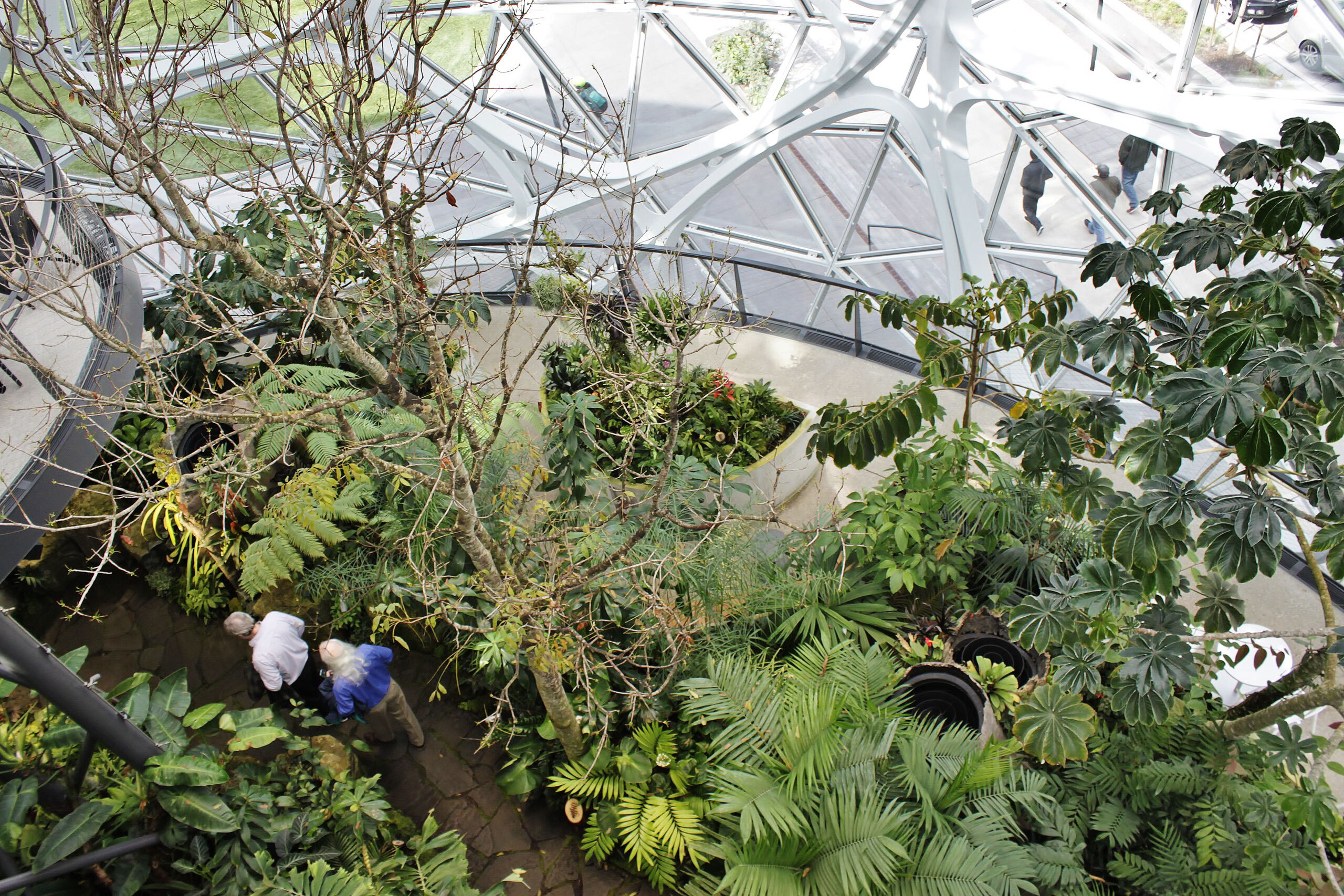
It is not just patients that benefit from the effects of biophilic design. Providing a courtyard or rooftop garden where staff can get a breath of fresh air and feel a breeze or sun on their skin reduces job-related stress and results in less employee turnover. Natural light, clean air, and greenery in the office, such as plants or living walls, are associated with higher levels of creativity and overall job satisfaction, better retention, and fewer sick days. The physical environment impacts employee experience.
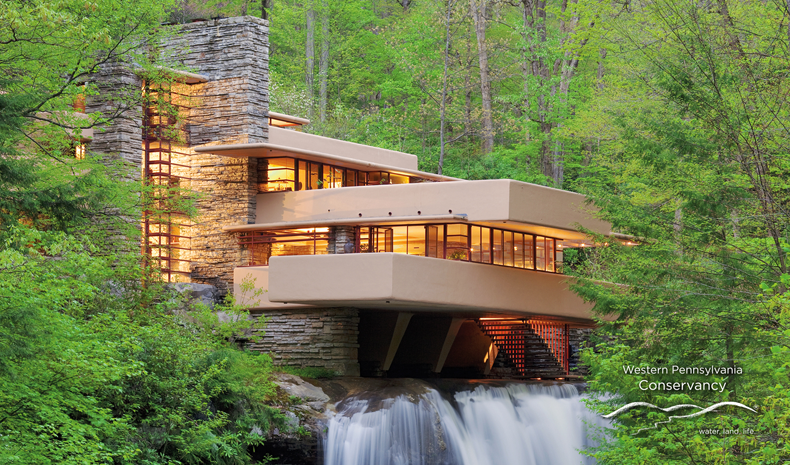
Frank Lloyd Wright’s Fallingwater is considered his masterpiece. Philip Johnson's Glass House is often cited as his best building. Mies van der Rohe’s Farnsworth House is thought of by many as one of the most iconic buildings in the history of Modernist architecture.
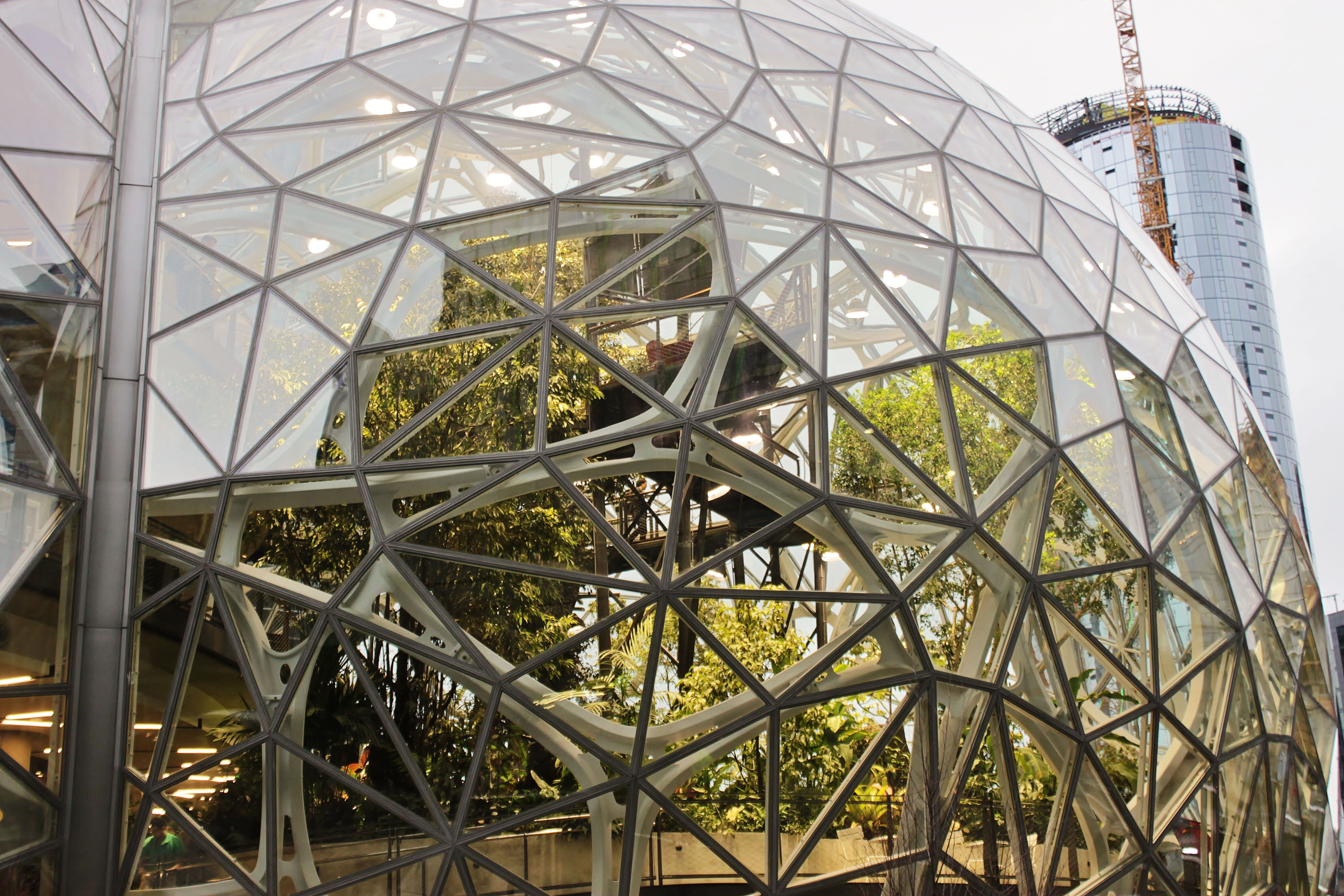
All are stunning examples of biophilic design that continue to impress and inspire. These works not only connect us with nature, but they also disrupt as little of it as possible. The Amazon Spheres in Seattle, Washington, the Treehotel in Harads, Sweden, the proposed plan by BIG and WXY for a greener and safer downtown Brooklyn, along with the increasing number of outdoor classrooms, retail spaces, and restaurants are intriguing examples of current biophilic design.
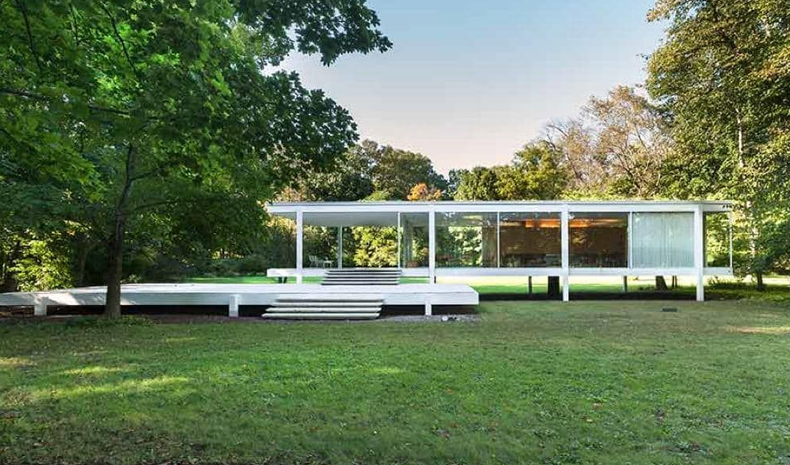
The Impact of Materials on Biophilic Design
Biophilic design is about the materials used as much as it is about the way in which the built environment interacts with nature and the users of the space. Along with the design of spaces, the materials we specify have a profound influence. A Japanese study comparing physical and emotional responses to viewing wood versus steel panels found that wood had both physiological and psychological advantages over steel (Sakuragawa et al., 2005).
Wood panels were associated with decreased depression or dejection, while steel increased both. Aside from mood, researchers measured a difference in blood pressure as well: wood panels were associated with decreased blood pressure or no change, while steel was associated with increased blood pressure. Wood was also associated with decreased blood pressure in an Austrian study; high school students who were taught in classrooms with floors, ceilings, and walls finished in real wood had lower heart rates than students taught in classrooms with no wood elements (Kelz et al, 2011). Besides having lower heart rates, students in the wood classrooms also reported lower levels of stress than those in non-wood classrooms.
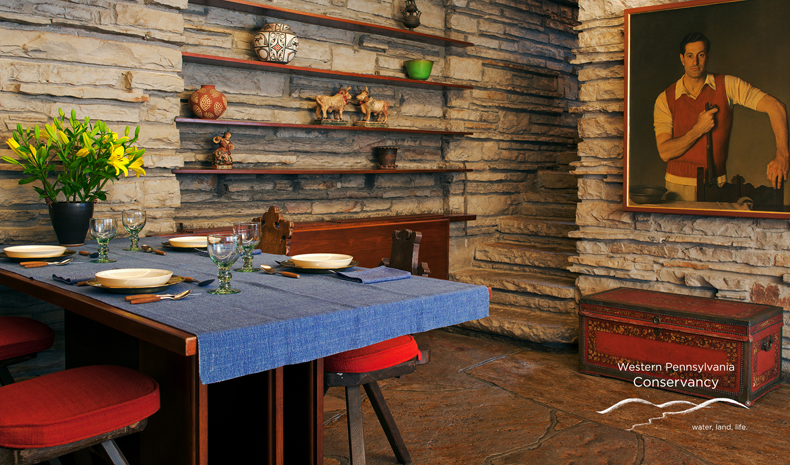
Biophilic design is not just good for us, it is necessary. Forest bathing (shinrin-yoku) and grounding/earthing are fascinating studies on the effects of being physically connected to the earth. Walking in the forest, or barefoot in the grass, offers an eco-antidote to tech-boom burnout and inspires a reconnection and appreciation for our natural habitats. Bringing aspects of the natural world into our spaces can bridge the gap to the outdoors and benefit our well-being.
Incorporating Biophilic Design Into Spaces
Incorporating biophilia into a design can be challenging, but even small additions have benefits. Utilizing multi-sensory design will enhance our connection with nature and provide restorative properties to make our lives better.
Here are some concrete ways to incorporate biophilic design into a project:
- • Maximize natural light and ventilation, both for scenic views and fresh air
- • Add functioning windows to allow for access to the natural soundscape
- • In urban environments, consider artwork, images, videos, etc. to counteract street noise if necessary
- • Utilize natural materials to provide a tactile sensorial connection
- • Incorporate plants, living walls, desktop Zen gardens, and the like to add life to sterile spaces and help clean indoor air by absorbing toxins, increasing humidity, and producing oxygen
- • Use color palettes of organic hues to reinforce our associations with the outdoors
- • Incorporate organic greens, driftwood neutrals, blues of the sky and sea, off-white sand, deep browns of soil and bark, and bright, optimistic hues as seen on birds and flowers
Let Nature Inspire You
Allow me to conclude with some words of biophilic inspiration from Frank Lloyd Wright himself:
"Study nature, love nature, stay close to nature. It will never fail you."
– Frank Lloyd Wright
Article Sources
Examples of Biophilic Design
--
Ruthanne Hanlon is the National Color & Design Manager at PPG Paints. Browse PPG Paints samples and order for free expedited shipping at www.swatchbox.com/PPG.
 Swatchbox is the leading sample fulfillment platform for professional designers and architects. Browse and request free material samples from leading brands and receive them in two days or less. Learn more and join Swatchbox at www.swatchbox.com.
Swatchbox is the leading sample fulfillment platform for professional designers and architects. Browse and request free material samples from leading brands and receive them in two days or less. Learn more and join Swatchbox at www.swatchbox.com.



